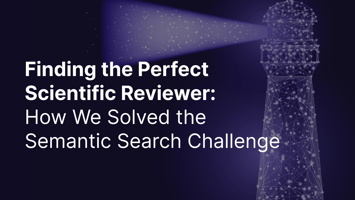In an era where artificial intelligence is reshaping nearly every industry, the world of scientific...
Scientific Silence: The Hidden Crisis in Research Visibility
By Oleg Ruchayskiy, CEO of Prophy
Out of 172 million scientific papers in our database, 53% have zero citations. Ninety million papers—each representing months of research, innovative ideas, and genuine scientific pursuit—have never been referenced by other researchers.
A number this staggering demands scrutiny. We dug deeper.

The Numbers That Shook Us
Let's examine this striking reality more closely. In scientific publication, citation patterns often reveal deeper truths about knowledge dissemination. Our initial finding demanded rigorous verification.
"You are welcome to challenge the exact number, but the fact remains: more than 90 million papers have never been referenced by other researchers. And no, this is not about paper mills. The rogue players try really hard to make their research cited on any possible and impossible occasion. So yes, we are speaking about legit researchers."
Beyond Verification
This discovery sparked intense discussion in the scientific community. Many questioned our methodology, particularly around what types of publications we counted. They rightfully pointed out that some content types rarely receive citations by design.
Cross-checking through OpenAlex confirmed our discovery with an even more striking figure: 56.7% of all articles have 0 citations.
To address these concerns, we examined our data rigorously. Our source comes directly from Prophy Knowledge Base, where we analyze each scientist's citation network, verified multiple times against major bibliometric databases. We then broke down scientific output into distinct categories:
- Peer-reviewed articles (most important)
- Preprints
- Supplementary materials (legitimate scientific outputs that are rarely cited)
- Front matter (non-peer-reviewed and super-rarely cited)
After removing supplementary materials and front matter—focusing solely on core scientific content—the percentage remained at 49.2%. Cross-checking through OpenAlex confirmed our discovery with an even more striking figure: 56.7% of all articles have 0 citations.

A Historical Perspective
This from Science in 2018 'The ten-year uncited rate across all disciplines, minus self-citation, is about 18%'"
The comparison with 2018 data reveals something even more concerning: despite technological advances in research discovery, the problem is growing. The exponential increase in published articles hasn't been matched by proportional increases in meaningful scientific connection.
The Scale of What We're Missing
Consider what these numbers truly represent:
- Decades of scientific work
- Countless hours of research
- Ideas that could transform their fields
- Potential solutions to current challenges
- Opportunities for collaboration lost to obscurity
Some of these papers might contain breakthrough insights. Others might hold crucial negative results that could prevent redundant research. A few might even be ahead of their time—like those Nobel Prize-winning papers that sat unread for years before their significance was recognized.
What This Means for Science
The implications stretch far beyond citation metrics:
- Research funding potentially misdirected
- Duplicate efforts across institutions
- Breakthrough connections waiting to be made
- Early-career researchers struggling for visibility
- Critical insights lost in the growing volume of publications
A Watershed Moment
These findings mark a crucial moment in scientific publishing. As our database grows and analysis capabilities advance, we're uncovering patterns that challenge fundamental assumptions about research dissemination.
The ecosystem of scientific knowledge faces a fundamental crisis. Half of all research papers remain invisible to the scientific community, creating a systemic challenge that affects every researcher, institution, and field.
Moving Forward
The scientific community stands at a crossroads. These numbers demand not just acknowledgment but action. As we process the implications of this discovery, the future of scientific communication must evolve.
The path forward will require input from the entire research community. We're committed to sharing our findings and contributing to this crucial conversation about the future of scientific communication.
This analysis is based on data from Prophy's Knowledge Base of 172 million scientific papers, with findings cross-verified through OpenAlex. Join the discussion about these findings at Prophy.
.png?width=337&height=96&name=Logo%20(1).png)





